It is recommended to change the brake fluid with an assistant, having previously installed the car on an inspection ditch or overpass
It is advisable to change the brake fluid once a year.
Use brake fluids that meet the class of at least DOT-4.
The order of fluid replacement in the brake mechanisms:
- — right rear;
- — left front;
- — left rear;
- — right front.
The brake hydraulic drive is bled to remove air that got there when filling with fluid after its replacement or after repairing hydraulic drive units associated with its depressurization.
Signs of the presence of air in hydraulic drive:
- — increase in pedal travel, its "softness" when pressing the pedal once;
- — gradual decrease in pedal travel with a simultaneous increase in its "hardness" when pressing the pedal repeatedly.
Before bleeding the hydraulic drive, it is necessary to find and eliminate the cause of the depressurization.
The steps for bleeding the hydraulic drive are the same as for replacing the brake fluid, described below.
The only difference is that it is not necessary to first pump out the old brake fluid from the reservoir, and the criterion for completing bleeding the working cylinder is the cessation of air bubbles from the hose, and not the appearance of fresh brake fluid.
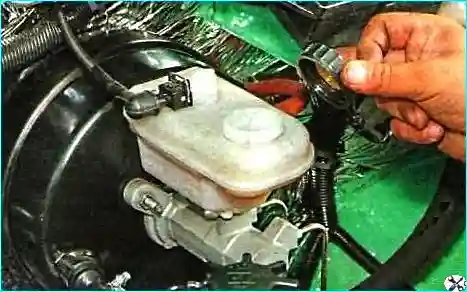
Unscrew the cap of the brake master cylinder reservoir
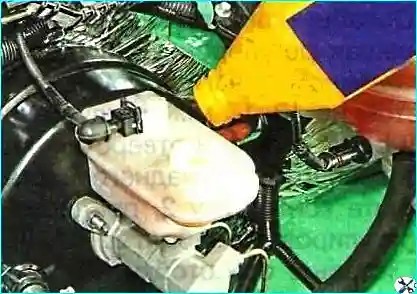
Pump out the old fluid from the reservoir and fill the reservoir with new brake fluid to the lower edge of the filler neck
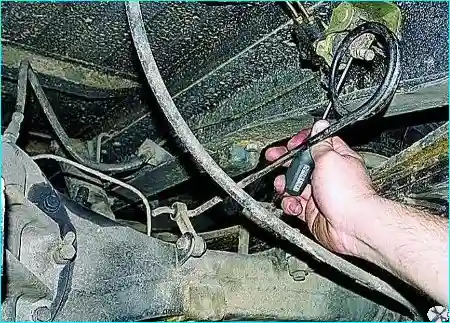
If the rear wheels are suspended, unlock the brake pressure regulator by inserting a screwdriver between the plate and the piston
Clean the air release valves from dirt and remove the caps from the valves of the front brake mechanisms
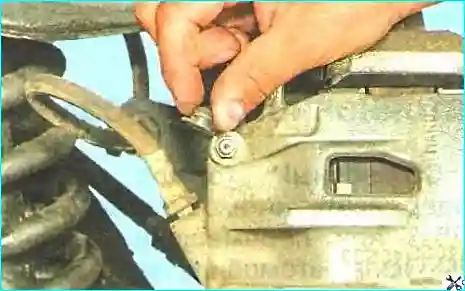
Remove the caps from the rear brake mechanisms
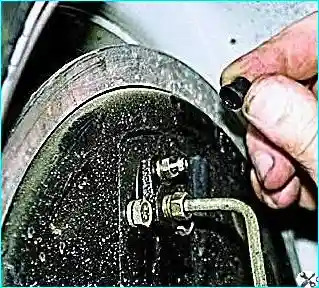
Put a plastic or rubber hose on the air release valve of the right rear wheel
Lower the end of the hose into a clean transparent bottle.
The assistant presses the brake pedal four or five times, then holds the pedal pressed.
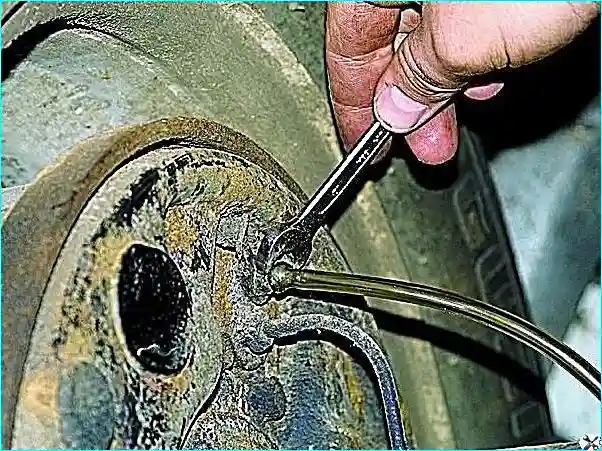
Unscrew the air release valve by ½ - ¾ turn.
Old brake fluid will start to flow out of the hose.
At this time, the brake pedal should smoothly reach the stop. As soon as the fluid stops flowing out, close the air release valve.
Constantly monitor the fluid level in the tank, not allowing it to drop to the MIN mark on the tank wall.
If necessary, add new brake fluid to prevent air from entering the hydraulic drive.
This ensures the gradual displacement of the old fluid with the new one without draining the hydraulic system.
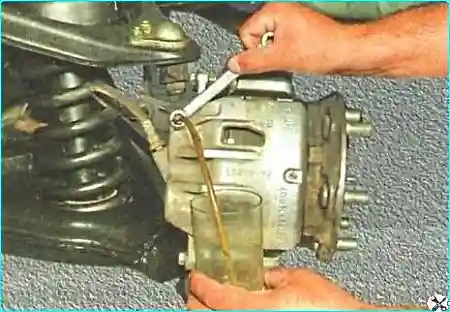
In the same way, we replace the brake fluid in the brake mechanism of the left front wheel.
Next, we replace the brake fluid in the brake mechanism of the left rear wheel, then the right front.
Repeat operations 5-9 until the fluid in the drive is completely replaced (clean fluid without bubbles should flow out of the hose).
Remove the screwdriver (if inserted) between the plate and the piston of the brake regulator.
Check the brakes. Press the brake several times - the pedal travel and force on it should be the same with each press.
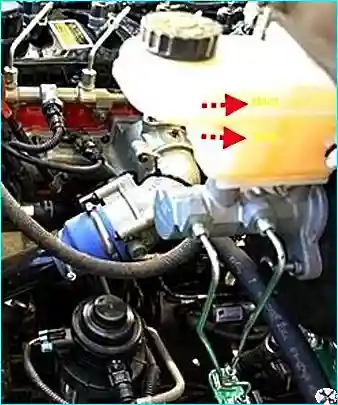
Add brake fluid to the level between the MAX and MIN marks on the tank wall and tighten the cap.
Put protective caps on the brake cylinder release valves.





